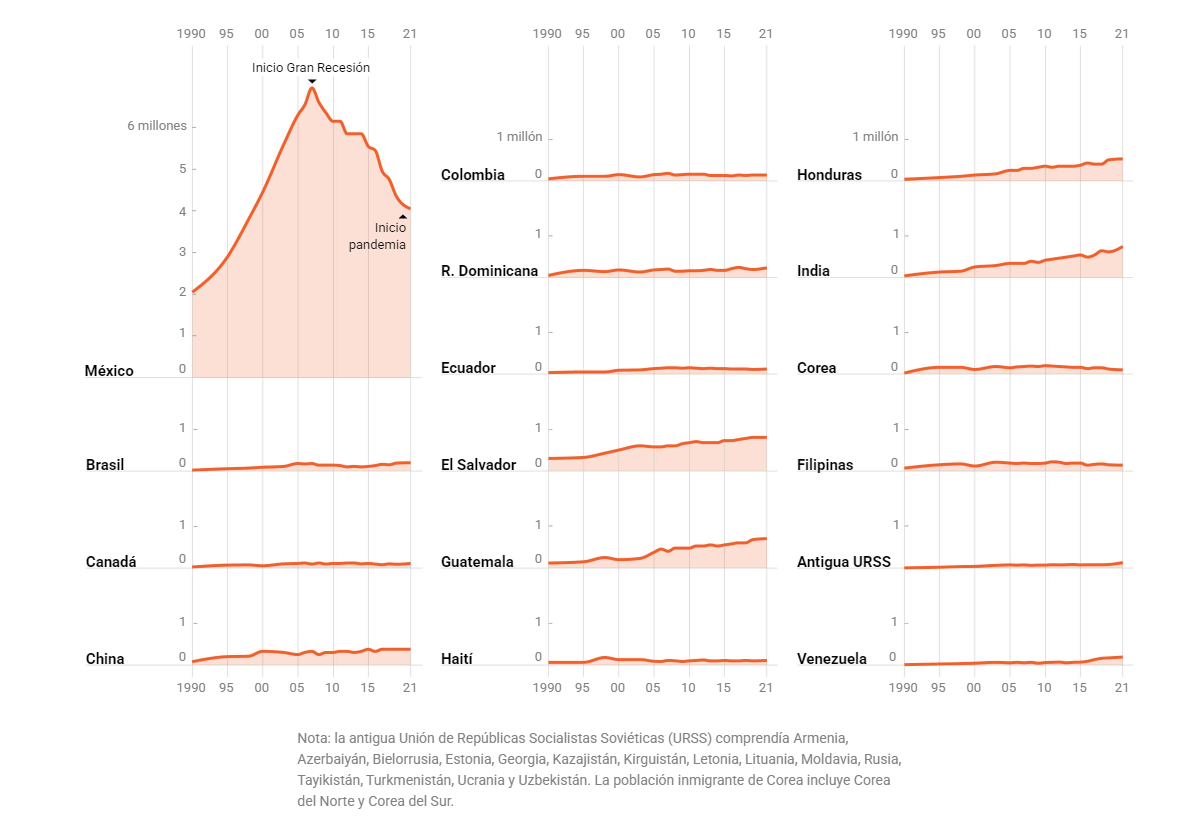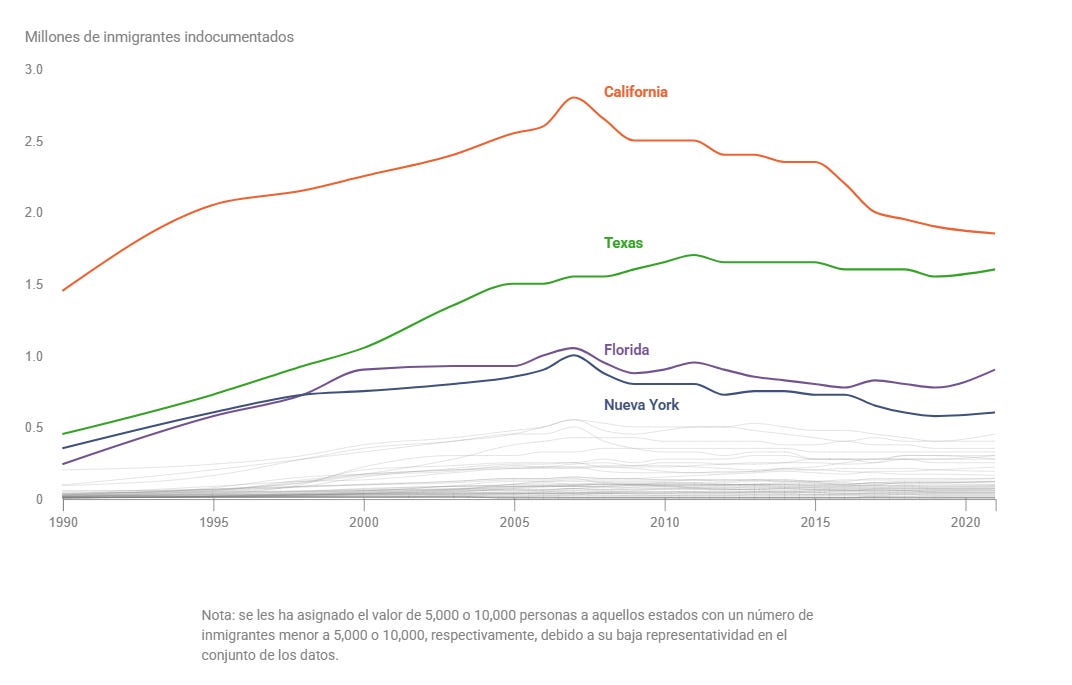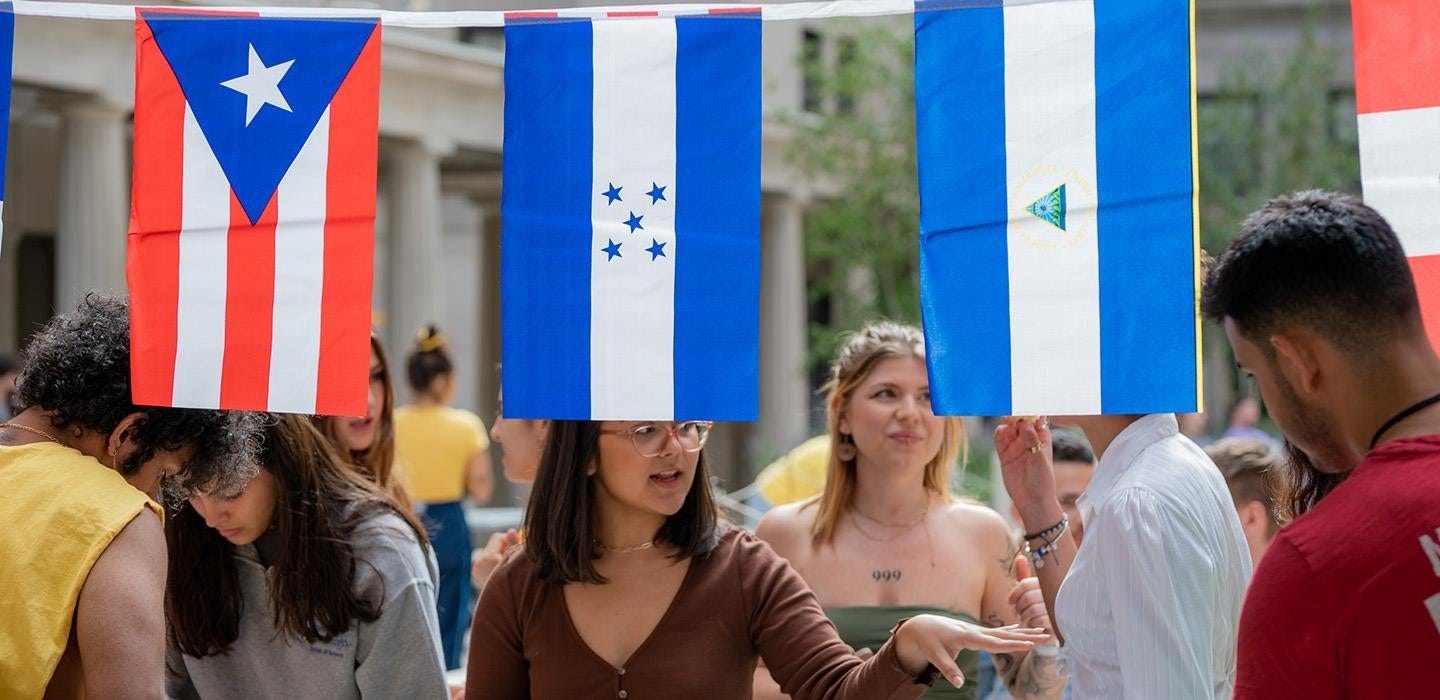30 Years of Migration in the US, Monday's Protest, Shakira Dedicates Her Last Grammy and more.
News from the Hispanic World in One Click
Welcome! La Chapulina Verde is bilingual. Every article is available in English and Spanish. Enjoy reading in your preferred language. Keep up to date and follow us on our social networks! Instagram, Threads, Facebook, and YouTube.
30 Years of Migration in the US
Where do they come from, and where will they go?
At the end of the 1990s and the early 2000s, with the arrival of immigrants primarily for jobs in agriculture, construction, and service industries, this period of high immigration coincided with a time of economic prosperity. The migration flow also increased due to promises of immigration reforms in presidential campaigns, such as in 2000, 2008, 2012, and 2020, when candidates offered the possibility of legalizing millions of undocumented immigrants in the United States.
Failure of Immigration Reforms
Over the years, several attempts at immigration reform have failed in the U.S. due to political obstacles. In 2001, President George W. Bush’s plan to regularize three million undocumented immigrants was halted after the 9/11 attacks. In 2013, the Senate passed a bipartisan reform that included a path to citizenship for millions of undocumented people, but it was blocked in the Republican-controlled House of Representatives. In 2021, the Biden administration pushed two bills that passed in the House but failed to gain enough support in the Senate.
Decline of Mexican Migration
For over 15 years, undocumented migration from Mexico grew steadily, reaching nearly seven million in 2007 during the Bush administration. However, since then, the number has gradually declined, and in 2021 it was estimated at 4.1 million. This decrease is due to several factors, including slower population growth in Mexico, economic improvements in the country, and the rising costs of crossing the border illegally.
Over the past week, significant developments have occurred in U.S.-Mexico border protection. Mexico deployed the first of 10,000 National Guard troops to its northern border, following an agreement with President Trump to combat fentanyl smuggling and avoid U.S. tariffs. This collaboration aims to enhance border security and address drug trafficking concerns. Additionally, U.S. Border Patrol Chief Michael Banks reported a 90% decrease in illegal border crossings since President Trump’s return to office on January 21, attributing the decline to strict enforcement policies. These measures reflect intensified efforts by both nations to strengthen border security and manage migration effectively.
Growth of Other Immigrant Populations
As Mexican migration declined, the arrival of undocumented immigrants from other regions, mainly Central America and Venezuela, increased. Since 2013, an unprecedented migration crisis has forced thousands to flee violence, poverty, and climate change. In recent years, undocumented immigrants from the Caribbean, South America, Africa, and the Middle East have also arrived in greater numbers.
Distribution of Undocumented Immigrants in the U.S.
The states with the highest numbers of undocumented immigrants remain California, Texas, Florida, and New York. The Salvadoran population is predominant in Maryland and Washington, while Indian immigrants are more concentrated in New Jersey and Ohio. Despite the recent rise in illegal crossings, migration from Mexico has remained stable.
Where is most of the migration concentrated?
Monday's Protest
The habitants of Pittsburgh come together around the community.
In November 2024, Pittsburgh’s immigrant community experienced growing tension following the appointment of Tom Homan, former acting director of ICE, as "border czar" by former President Donald Trump. This appointment sparked concerns due to announced deportation policies targeting undocumented individuals. Although Homan stated that deportations would focus on individuals who pose threats to public and national security and would be carried out in a "planned and humane" manner, the local community expressed anxiety over the potential impact of these measures. In response, local organizations such as the Latino Community Center and Casa San José reaffirmed their commitment to supporting the immigrant community by providing safe spaces and resources for those who might be affected.
In February 2017, various cities across the United States witnessed the national protest known as "A Day Without Immigrants." Restaurants, supermarkets, and service businesses closed their doors to demonstrate the economic impact of the immigrant population and to protest the Trump administration’s immigration policies. In Chicago, over a thousand people participated in a march that ended at Federal Plaza, while in Arizona, many small businesses displayed signs announcing their closure in support of the national campaign. Participants refrained from making purchases or using public transportation in an effort to highlight the importance of immigrants to the U.S. economy.
On Monday, February 3, 2025, numerous Hispanic-owned businesses across the United States closed their doors in support of the initiative. This national protest aimed to emphasize the crucial role of immigrants in the U.S. economy and society and was a direct response to recent immigration policies and ICE operations.
In Pittsburgh, several Hispanic businesses joined the protest, shutting down their establishments to protect their workers and customers from ICE raids conducted over the previous weekend. The mayor of Pittsburgh declared that the city would not cooperate with federal immigration actions, demonstrating support for the local immigrant community.
Shakira Dedicates Her Last Grammy
An Emotional Speech Addressed to the Immigrant Community
At the latest edition of the Grammys, Shakira was awarded Best Latin Pop Album for her record *Las Mujeres Ya No Lloran*. This recognition marks her third win in this category and the fourth in her career. During her acceptance speech, Shakira dedicated the award to immigrants in the United States, referring to them as her "brothers and sisters in migration." In a context of growing immigration tensions and deportation policies, she stated:
"This award is for all immigrants who work hard and contribute so much to this country. I will always fight alongside you."
The gala also paid tribute to the victims of the wildfires in California, with host Trevor Noah highlighting the resilience of the community and the importance of solidarity in difficult times.
❤️ Cosas que nos encantan | ❤️ Things We Love
Coffee del Mundo.
Coffee Del Mundo is a roasting company and tasting room located at 7414 S. Vermont Ave, Los Angeles, California. It was founded by Juan Perez, a Mexican immigrant who moved with a dream in mind: to offer an authentic experience while exploring different countries, one coffee at a time.
The mission of Coffee Del Mundo is to provide coffee lovers with a global experience, allowing them to explore flavors from different coffee-growing regions worldwide. Its motto, "Taste the Mundo," reflects this goal of taking customers on a sensory journey through various coffee cultures and traditions.
The company offers carefully selected coffees from countries such as **Burundi, Cameroon, Colombia, Congo, El Salvador, Ethiopia, Guatemala, Mexico, Nicaragua, and Tanzania. Additionally, it organizes themed "excursions" that allow customers to taste coffees from specific regions, such as the "Latin America Tour," "Global Tour," and "Africa Tour."
Coffee Del Mundo is also dedicated to educating customers about different coffee cultures and brewing methods. It offers "Virtual Coffee Excursions," ideal for corporate events, where participants can learn about and taste various coffees in a virtual setting.
In January 2025, Coffee Del Mundo plans to expand with a new location at Watts Kaiser Permanente, located at 1465 E 103rd St, Los Angeles, CA 90002, reflecting its ongoing commitment to growth and community service.









